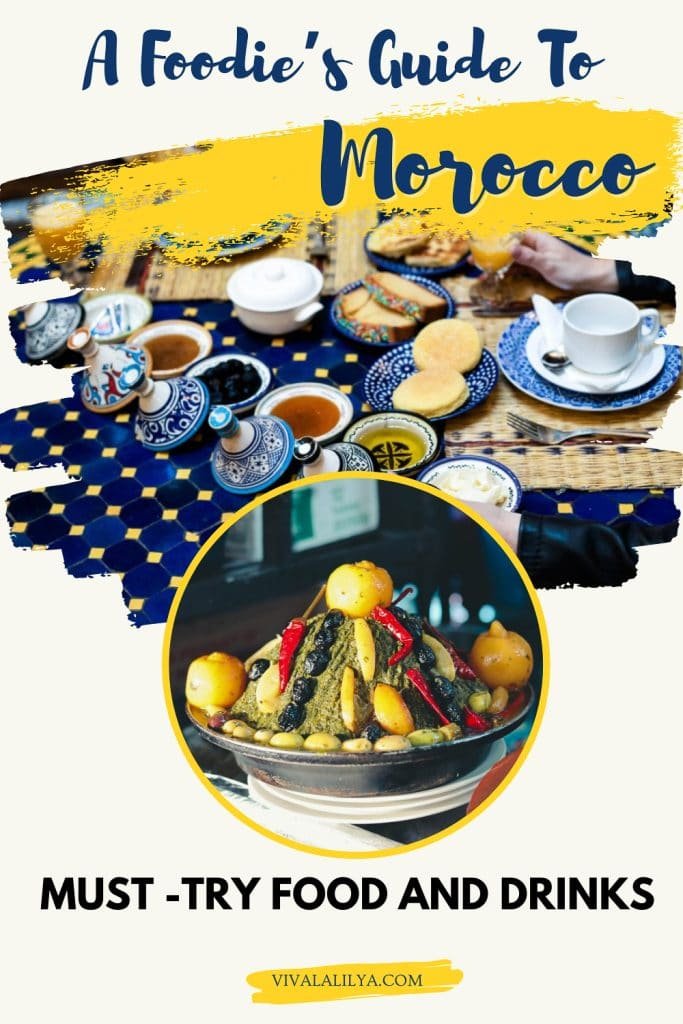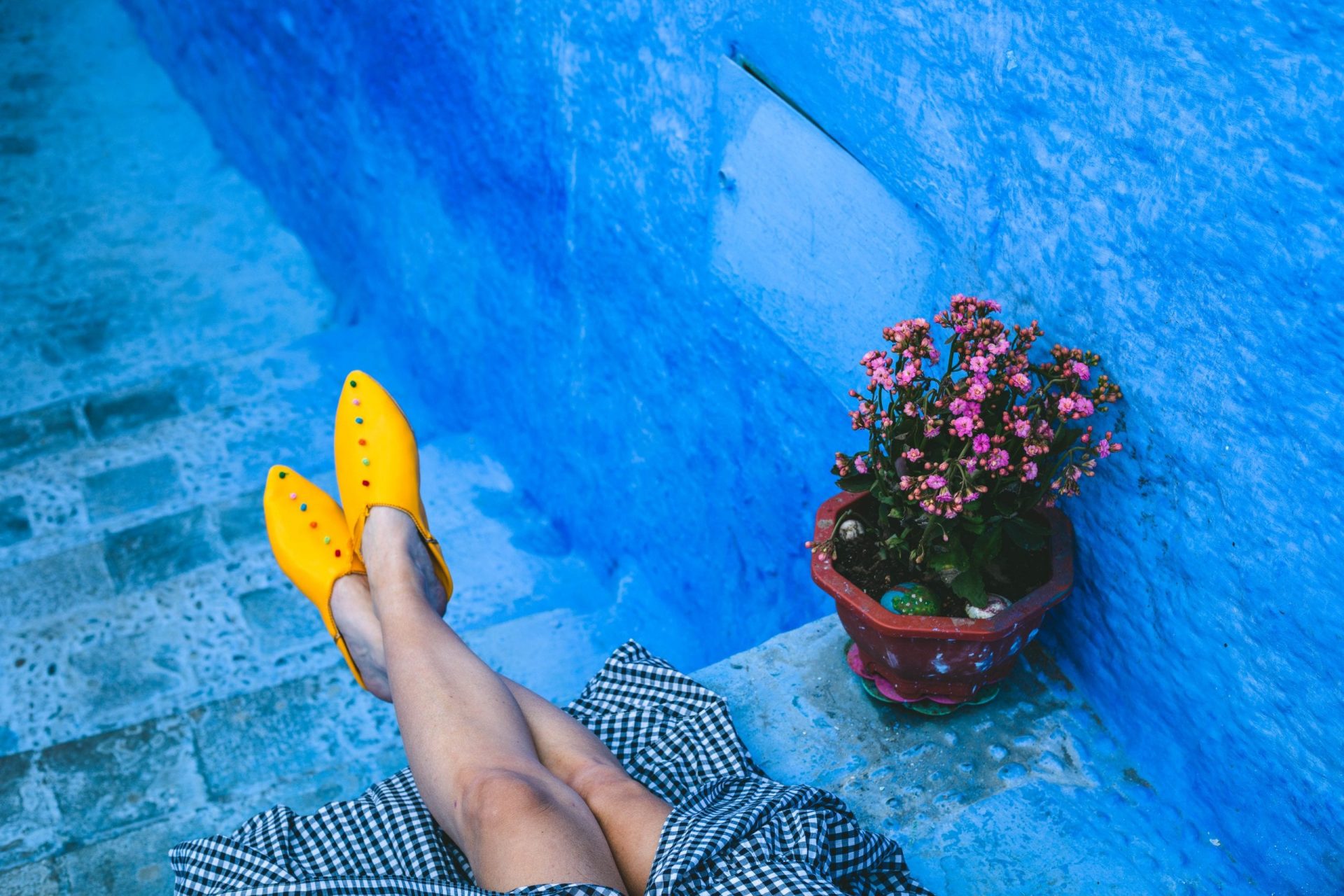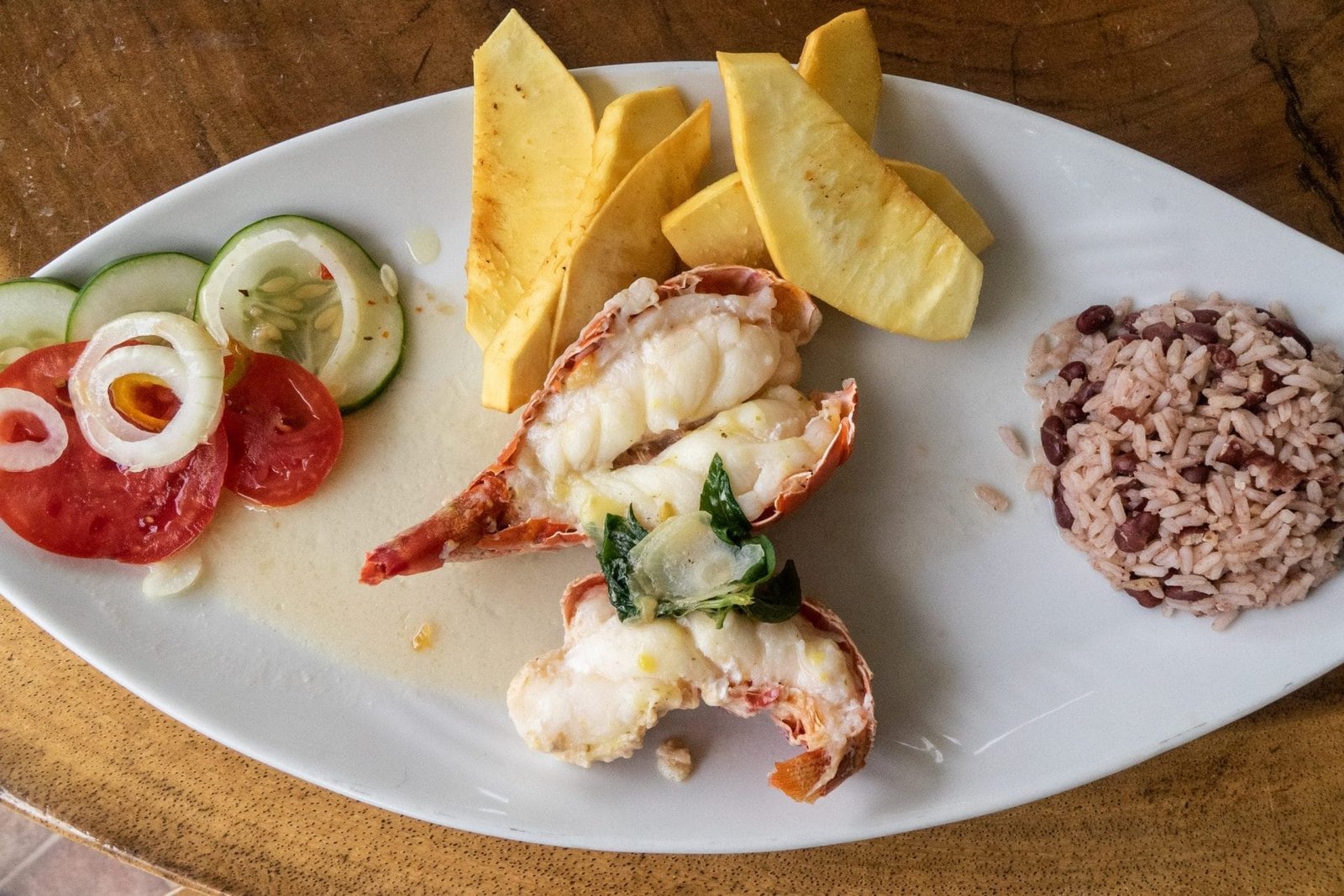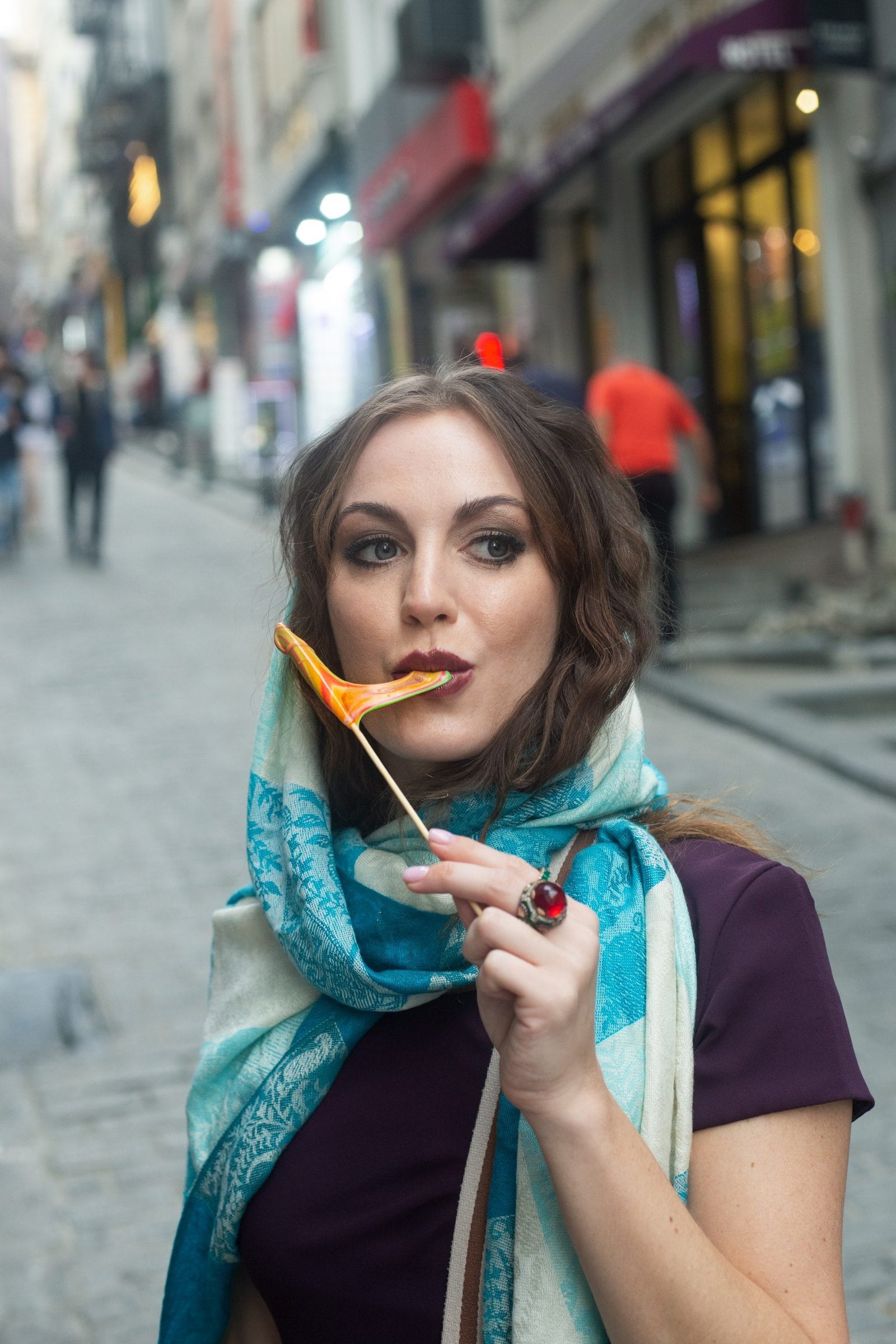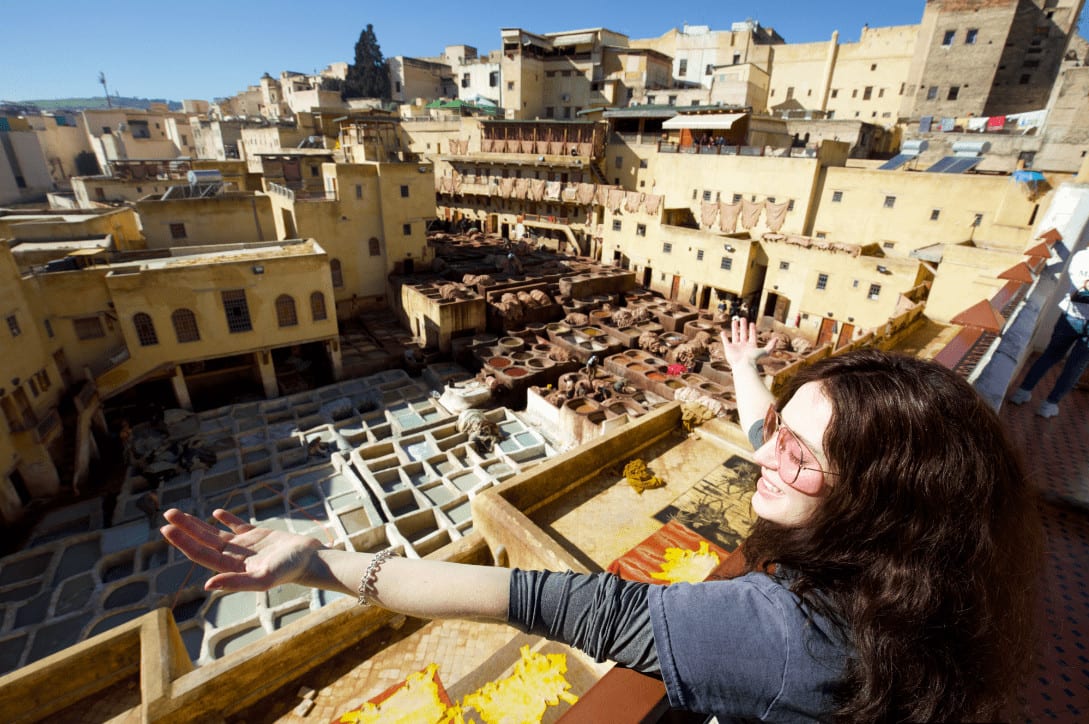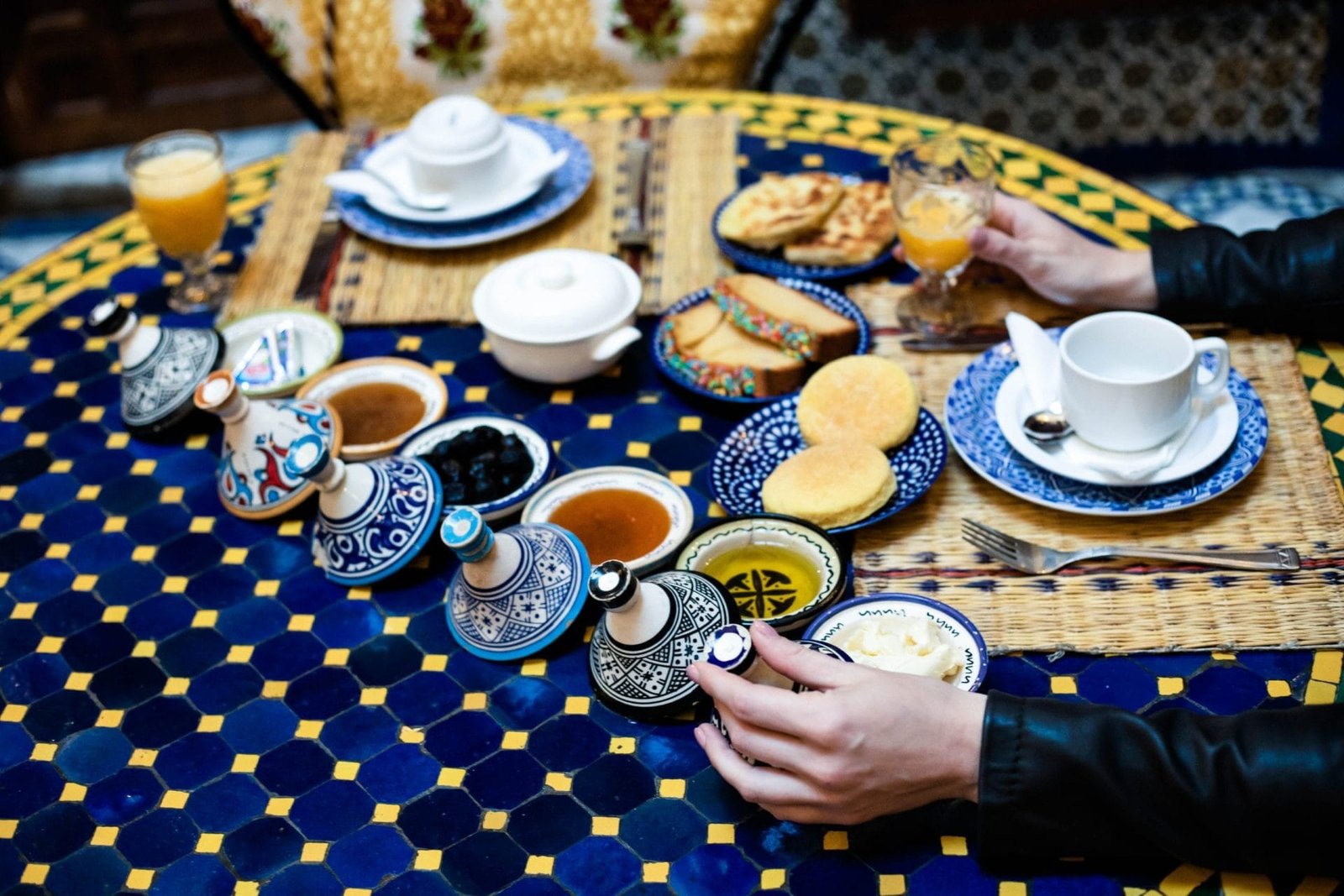
A Foodie’s Guide To Morocco: Must -Try Food and Drinks
Discover the Moroccan Cuisine with this food guide
Moroccan food is one of the most vibrant and colorful on the planet. Always made with fresh ingredients and seasoned with the world’s finest spices, every meal is a unique experience.
The bread that comes out the communal ovens is unparalleled, and the food is always bountiful. Vegetables are well represented, making Moroccan food one of the most balanced and healthiest in the region, and thanks to a steady stream of travelers for the last one hundred years, service is top notch.
Must- Try Food and Drinks in Morocco
The most popular proteins are beef, goat, mutton chicken and lamb, but Morocco has an extensive shoreline, so seafood is not uncommon.
Morocco is part of the Mediterranean Basin, and that means olive oil, dates, dried fruits, nuts, honey and citrus fruits play a vital role in the country’s cuisine.
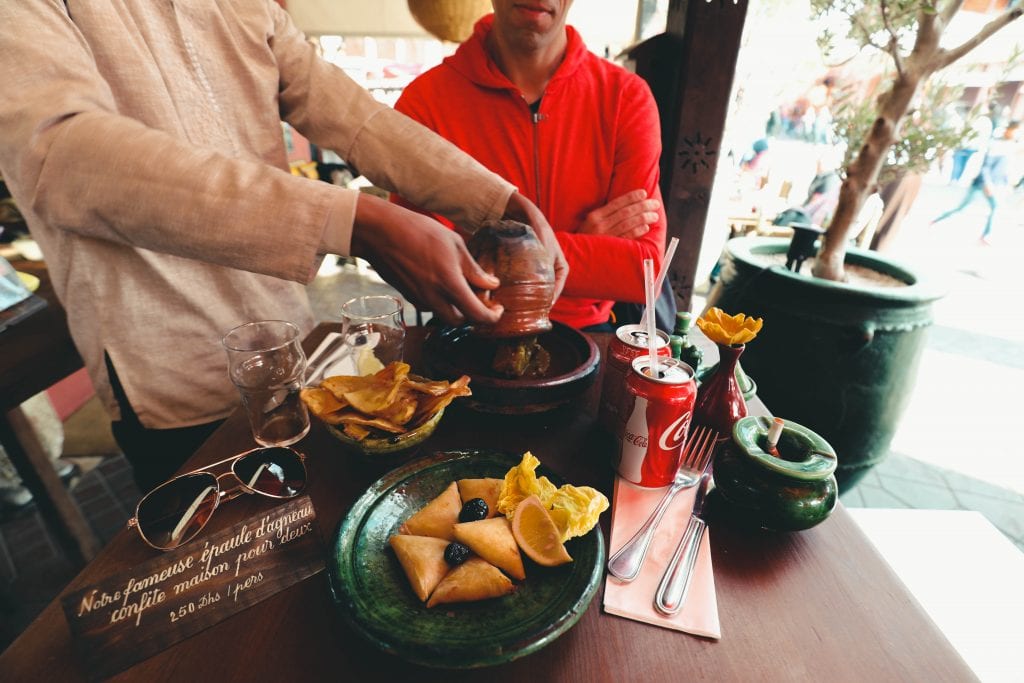
The masterful use of spices differentiates the country’s cuisine from the Mediterranean specialties from across the pond. Saffron, ginger, paprika, fennel, cloves, anise and nutmeg liven Moroccan food. Together with fresh herbs: mint, parsley, sage, laurel and oregano, there’s no shortage of flavor intensity.
Home-cooked meals are so sophisticated they would be described as restaurant-quality everywhere in the world, and even the street food has a je ne sais quoi that leaves you wide-eyed and bushy-tailed.
It’s All About Sharing in the Moroccan Cuisine
Food in Morocco is all about the time spent around the table. Food here is never only nourishment, but community. That’s why the diverse specialties are often served center table.
Eating is also primal, you eat many things with your hands, creating a bond between you and your food that’s hard to describe. Bread, of course, which is as artisanal as bread gets, helps you scoop the last drop of spicy sauce from the plate.
If you are to do it right, you want to use your thumb, middle and index fingers to scoop the food from the plate to your mouth. Everyone shares food from the same plate, but each with its imaginary ‘slice’ of food. You are only supposed to eat what’s facing in your direction.
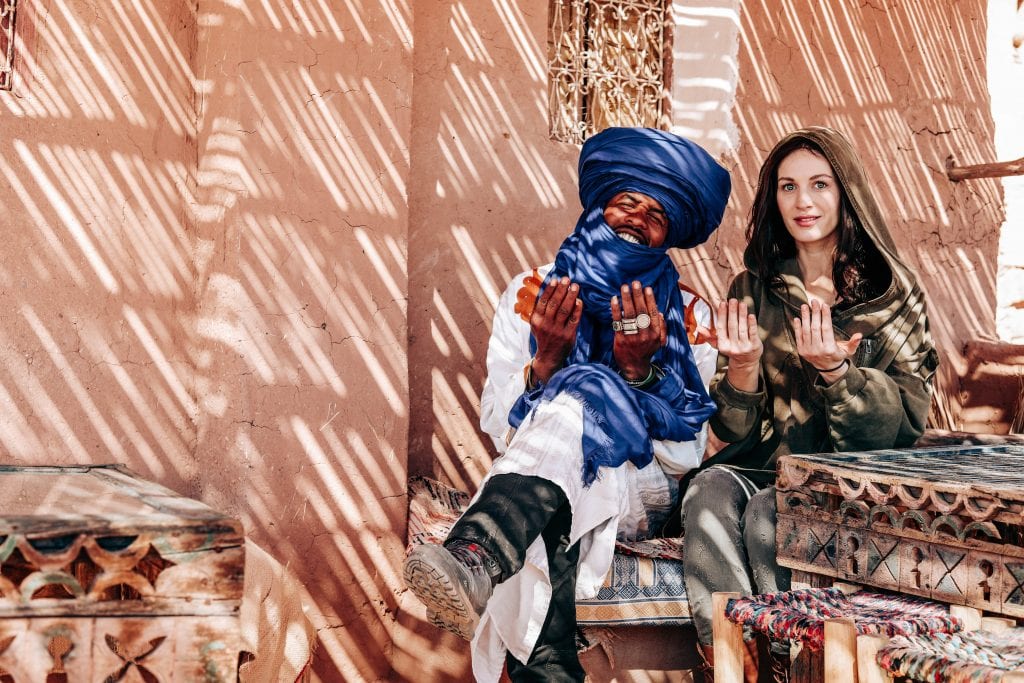
Food is not only shared from the same plate. Morocco’s meal structure encourages sharing, too. Small dishes are brough to the table in what seems like a never ending parade of delicious food, from harira soup to warm salads, hearty pastilla pies and Morocco’s signature dish — the tajine.
One of the most impressive foodie experiences in Morocco is the Diffa, a collection of the country’s most sumptuous dishes served in an authentic feast fit for a king. That’s when you know you’re being well taken care of.
A Typical Moroccan Breakfast and Lunch in Morocco
Foods to try in Morocco are not reserved for the dinner table, you’ll find them from dusk till dawn.
You know breakfast is the most important meal of the day, and for most of us, it means going back to our staple foods. Morocco is no different. No matter where you are in the country, the streets are filled with the unmistakable scent of freshly baked bread. Flat bread, that is, and it is gorgeous!
Clarified butter or ghee, jams and preserves complement the steamy bread, always with a cup of Moroccan mint tea by your side.
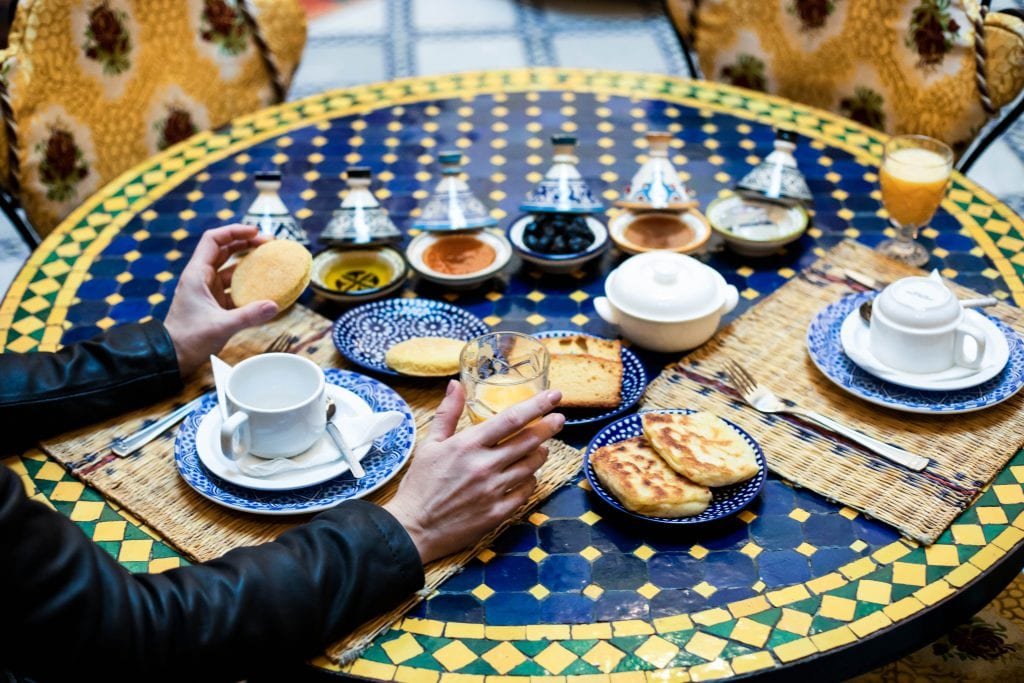
Savory breakfast specialties exist too, and eggs are as popular here as anywhere else on the planet. Pancakes, though, here’s they’ve elevated them to perfection. Thin and delicate, they get their personality from honey and butter, but you can enjoy them with jam too.
Breakfast is no different in hotels, which are more than happy to offer this wholesome treats to their guests. Of course, most modern restaurants and high-end hotels will have on the menu your favorite international breakfast classics.
Lunch in Morocco is heartier than you might think. A series of small dishes, mostly hot and cold salads, olives, lentils and beets are known together as mezze. Pastry pies called pastilla, a Moor tradition, are the main feature, and can be filled with meat or pigeon.
The Mighty Tagine
You can’t talk about Moroccan food without going deep into the tagine tradition.
The tagine is the conical earthenware pot used to steam the country’s most famous dish, but the dish itself is a tagine too. Tagines, though, are not all the same — there are countless variations, making every tagine you try a unique experience.
It all starts with hot charcoals that heat the flat part of the tajine cooking the food inside. The steam, trapped in the conical top, is condensed and returns to the dish’s bottom helping with the cooking. These are indeed slow-cooked stews, and the method allows the food to keep its color, flavor and nutrition.
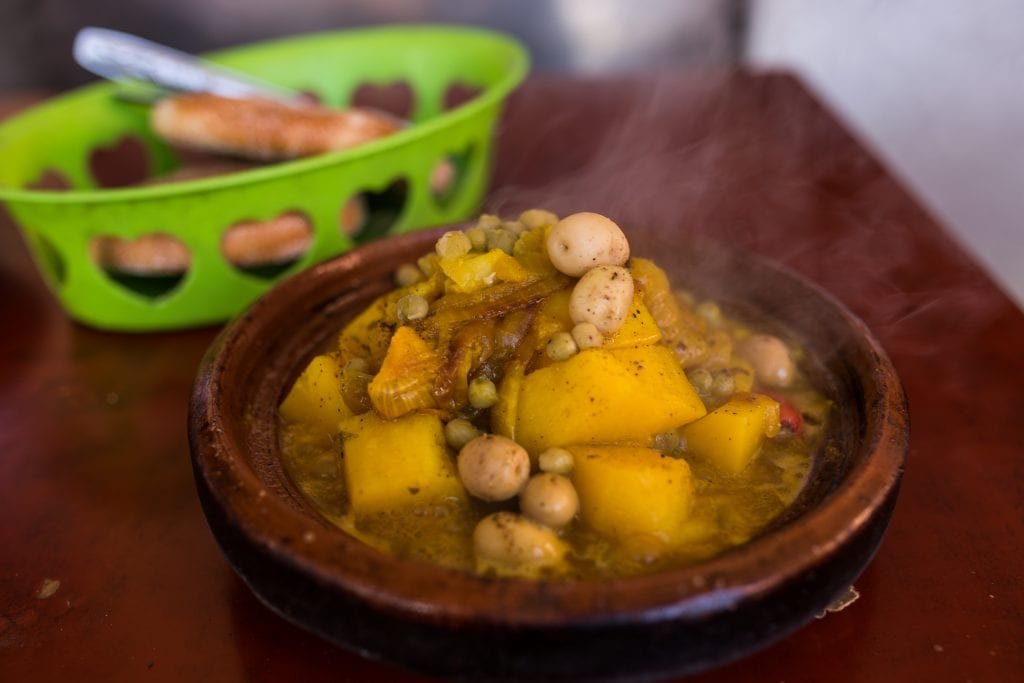
Although there are plenty of vegetarian tagines, most well use some kind of meat, whether it’s chicken, beef, fish or lamb. There’s a sweet element to every tagine, too, mostly represented by prunes, dates or dried fruits.
Lentils, vegetables and even fruits are common in many tagine recipes, but what they all have in common is a generous but balanced addition of spices: saffron, ginger, turmeric, cumin, cinnamon and paprika.
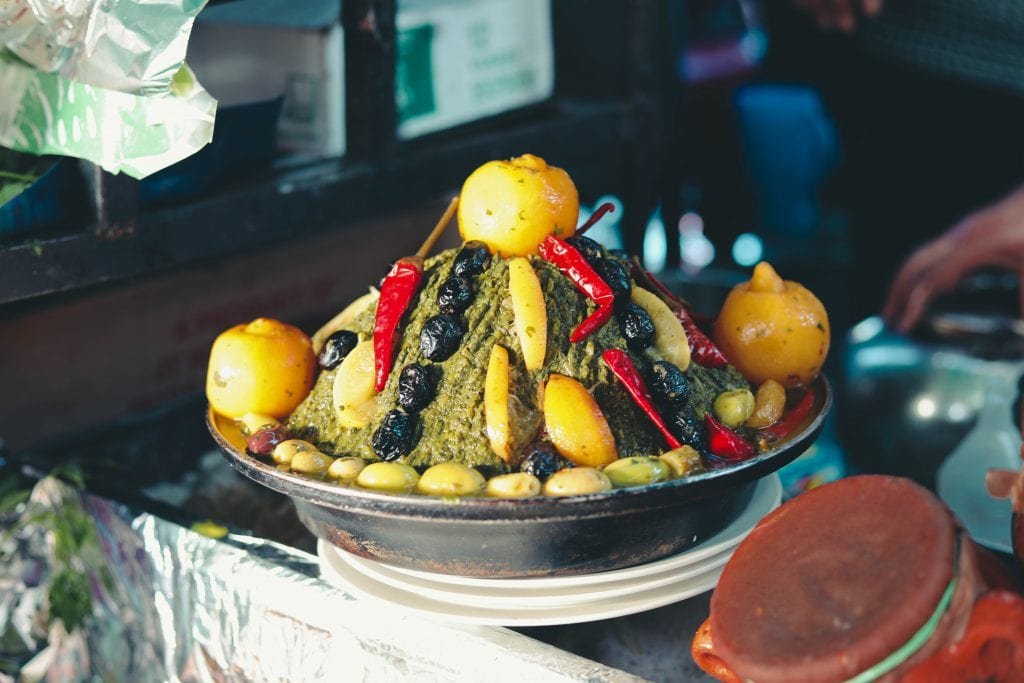
Visit Morocco and you’ll soon become a tagine expert, they’re served everywhere, from the humblest street food stall to the most awe-inspiring fine dining restaurant. That’s the beauty of it; tajines bring people together.
You Can’t Miss the Mechoui
If you think Moroccan cuisine is just small plates and tagine, think again. There’s a surprise at every corner. One of the lesser-known but most satisfying dishes in Morocco and neighboring countries sharing the Magrebi cuisine is the Mechoui.
Picture a spit-roasted, barbecued whole ship or lamb. Cooked to fork-tender perfection while gaining the loveliest crispy skin. That’s what cooking with fire looks like, and it’s a tradition that goes back in the area for thousands of years.
People might improvise a pit oven by digging a hole in the ground or preparing the Mechoui in a special oven. The result is meat kissed by smoke and fire; it falls off the bone, and although you know it takes time to cook a whole animal in such a primal way, you know it’s well worth the wait.
As with every food in Morocco, the mechouli is a community effort and is enjoyed by everyone. That’s the spirit that has kept people together in this harsh region for centuries, and it all starts at the table.
Expect the most fragrant, spicy and juicy barbecue of your life. This is cooking with fire elevated to perfection, and you can only experience it in Morocco. That’s a term you want to remember — mechouli.
The Pastilla, Pigeon Pie.
Our Morocco food guide wouldn’t be complete without describing the pigeon pie, also known as bastilla or pastilla, among other Moroccan specialties.
Picture a flaky, buttery dough not dissimilar to filo, filled with a hearty stew based traditionally in pigeon, today, chicken is more common, though. This is Morocco’s comfort food!
Harira, A Comfy Soup
Talking about comforting food, I’d love to talk to you about harira, a traditional North African soup that’s served year-round but especially during the Ramadan, a Muslim holiday of prayer, reflection and community.
It’s easy to see why harira is amongst the locals favorite starter and light lunch. The tomato-based broth, thickened with chickpeas or lentils, aromatized with lemon and brough together by adding eggs is a thing of beauty, soul food if you will. You’ll be pleased to know everyone in Morocco has its own harira recipe, so you’ll have a great time trying them all!
Moroccan Typical Drinks
Moroccan drinks get their own section, because the weather here can be unforgiving, which means people have developed the art of staying hydrated.
Alcohol is frowned upon in Morocco, but with 12.3 million tourists visiting every year, many restaurants now offer wine, beer and spirits.
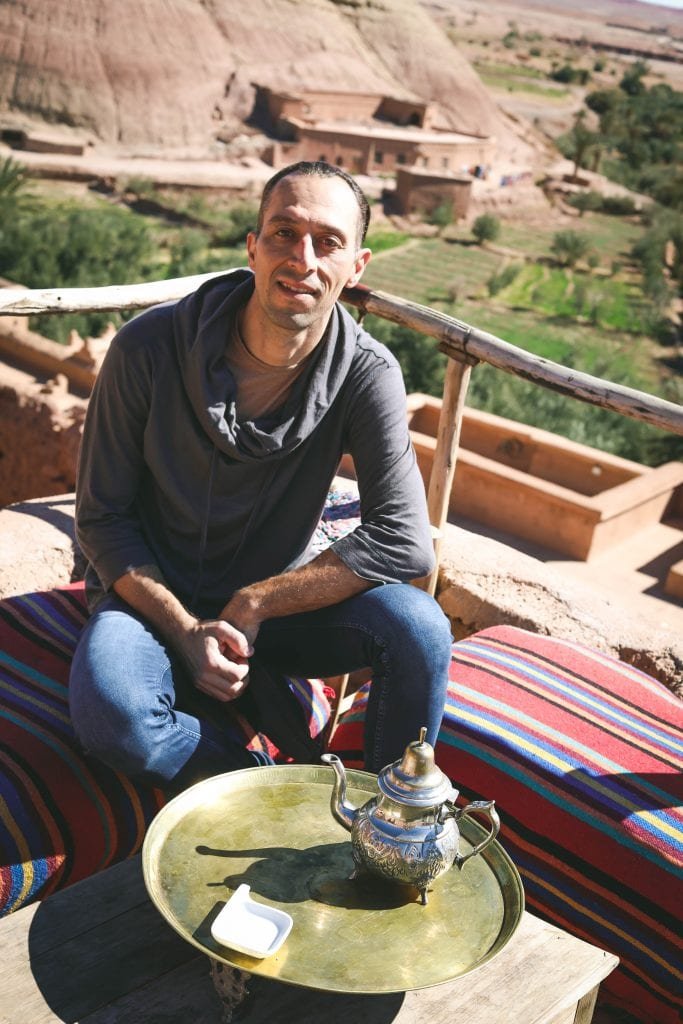
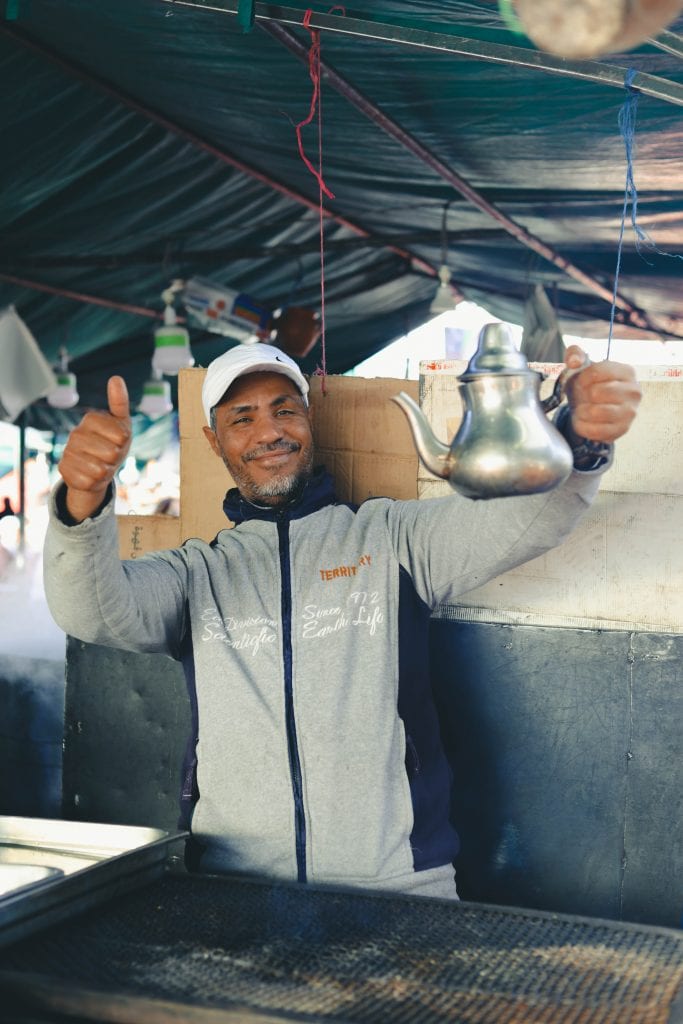
Interestingly, what you want to drink more often is the mint tea. Sweet but not cloying and incredibly refreshing, the combination of green tea and mint is a match made in heaven. By the way, refusing a cup of tea in Morocco is bad manners, so say yes to mint tea.
Ending With a Sweet Note
With food as good as this, I guess you won’t be surprised if I tell you Moroccans have a fantastic collection of sweet treats. Fruit is awesome here, but so is the honey.
Moroccan Honey
Do you think you know honey? Well, get ready to be swooned off your feet, because this is the real thing — raw honey from feral African bees. Single provenance honey that’s not only considered a national treasure, but it has also healing properties! Depending on the flowers visited by the bees, you can have either honey great for digestive discomforts, or an excellent aid against colds and the flu.
Moroccan Pastries
If bread is good in Morocco, wait until you try their pastries. The famous snake cake, shaped as a coiled snake and flavored with almond paste is something else, and the doughnut-like fritter known as sfenj is incredibly aligned with western tastes, a donut in the African coast, how’s that for a sweet surprise?
